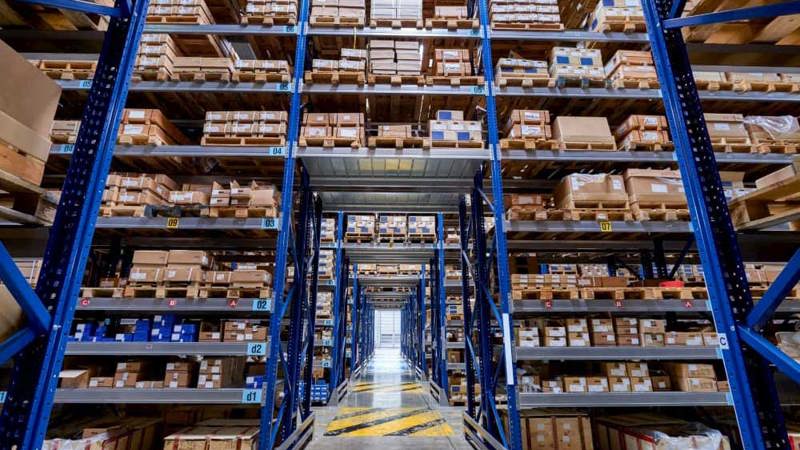Ecommerce continues to grow in topline revenue and as a percentage of retail sales. Similarly, cross-border ecommerce is increasing in total sales and as a percentage of ecommerce sales. More companies are expanding into the US, opening other non-native markets, and building omnichannel supply chains through cross-border ecommerce.
There is an opportunity for Freight Forwarders and Customs Brokers to expand into this market – if they can efficiently manage customs and security filings in destination countries and bridge from processing low-volume, high-value B2B shipments to high-volume, low-value B2C orders.
A brief history of international cross-border ecommerce.
The origins of cross-border ecommerce, like domestic ecommerce, can be traced back to the founding of online marketplaces with global reach and international payment gateways in the late ‘90s.
Global E-Commerce growth Is expected to achieve a 9% Compound Annual Growth Rate through 2027— more than double projected brick-and-mortar retail growth of a more moderate 4% (Source: BCG).
Similarly, cross-border ecommerce is gaining market value. In 2023, global retail e-commerce sales reached an estimated 5.8 trillion U.S. dollars. Projections indicate a 39 percent growth in this figure over the coming years, with expectations to surpass eight trillion dollars by 2027 (Source: Statisa)
While our online, social, and mobile worlds melt global borders, they are still very much a reality when it comes to getting purchases into the hands of consumers.
Navigating multiple customs and security filing requirements is easier to handle for larger bulk B2B shipments, than with smaller, higher frequency B2C orders. As a result, many Freight Forwarders and Customs Brokers rely on multiple systems to perform multiple tasks to fulfill cross-border ecommerce orders – often specific to the destination country or region.
The trends powering growth in international ecommerce.
1. The US cross-border ecommerce market still has plenty of room for growth.
The United States is the second largest market for eCommerce with a predicted revenue of US$1,064,290.8 million by 2024. Revenue is expected to show a compound annual growth rate (CAGR 2024-2028) of 7.4%, with a projected market volume of US$1,415,925.7 million by 2028 (Source: ECDB)
Online orders from abroad represent roughly three percent of retail e-commerce revenue in the United States and Canada. This share may seem small, however, with the cost of livin crisis continuing to drive demand for affordable goods from countries like China, US domestic ecommerce buyers are poised to occupy a larger portion of the cross-border ecommerce market (Source: Statisa).
The US has complex customs and security clearance requirements. Though the de minimis value at which goods could enter the US duty free was raised from US $200 to US $800, these still require filings under Section 321 Type 86.
There are additional filings required as well. Advanced security filings are required for sea shipments (ISF-Importer Security Filing) and air shipments (ACAS-Air Cargo Advanced Screening). Manifest filings (AMS) are also required for all modes of transport (air, sea, road, or rail). Fortunately, they can all be handled electronically.
With the lean margins of international ecommerce order fulfilment, it is important that Freight Forwarders and Customs Brokers handle all fillings and clearances digitally.
2. Global brands and OEMs are using cross-border ecommerce to expand into the US and other markets.
Previously, opening new markets in other countries meant significant investment in brick-and-mortar stores, physical distribution warehousing, or in-person sales.
With the global reach of the internet and social media, global brands and manufacturers can now use online sales and marketing to penetrate non-native markets more easily. Then they can directly fulfill orders from existing inventory in native country warehouses and/or factories. A significantly lower barrier of entry.
With a regionalized website, marketing investment and cross-border ecommerce fulfilment support:
- National SMEs are expanding to become multinational
- Larger enterprises with significant presences in continental or trading regions are going global
- OEMs and manufacturers are selling direct to consumers
Freight Forwarders and Customs Brokers may already provide B2B supply chain support to companies that fit the description above. Adding international ecommerce fulfillment to their existing service can increase customer sales, particularly if it can be done alongside existing processes, making these relationships more profitable and stickier.
3. Traditional retailers are turning to omnichannel retail and fulfillment.
Besides impacting in-person retail sales, the COVID-19 pandemic exposed limitations in traditional retail selling and vulnerabilities in the global supply chain.
As a result, brick-and-mortar retailers pivoted to online sales and adopted omnichannel fulfillment strategies to maintain customers and build resiliency into their supply chains. They now sell online and fulfil orders from local stores, regional distribution centers, and national warehousing inventories.
Drop shipping from international manufacturers and origin depots is a natural extension of that strategy. It increases the size of the inventory that can be committed to purchase while decreasing the chance of shopping cart killing stock-outs.
Freight Forwarders and Customs Brokers that manage bulk B2B cross-border shipments already maximize load capacity. International ecommerce fulfilment provides even more options to increase the profitability of international consolidations. When mixing traditionally dense cargo with ‘fluffy’ ecommerce shipments, loads can be packed to maximize the capacity of each consolidation reducing dead space. Thereby, increasing efficiency and profitability. After all, you can’t make money shipping air.
Want faster, safer, and more reliable cross-border ecommerce fulfilment?
Looking to digitally handle all fillings and clearances into the US, process cross-border ecommerce order fulfilment alongside larger shipments, and maximize shipment density? CargoWise International Ecommerce can help you efficiently manage the entire international ecommerce supply chain from origin country shipper to consumer’s doorstep in the destination country.
Use International Ecommerce to handle high order and package volumes, deliver ecommerce orders into the US market, and fulfil international ecommerce like a major courier. Visit the solutions page to learn more and request a cross-border ecommerce consultation.
Sign up to our CargoWise Newsletter
Subscribe for the latest updates on new CargoWise functionality, success stories from our customers, and insights from our global team.
